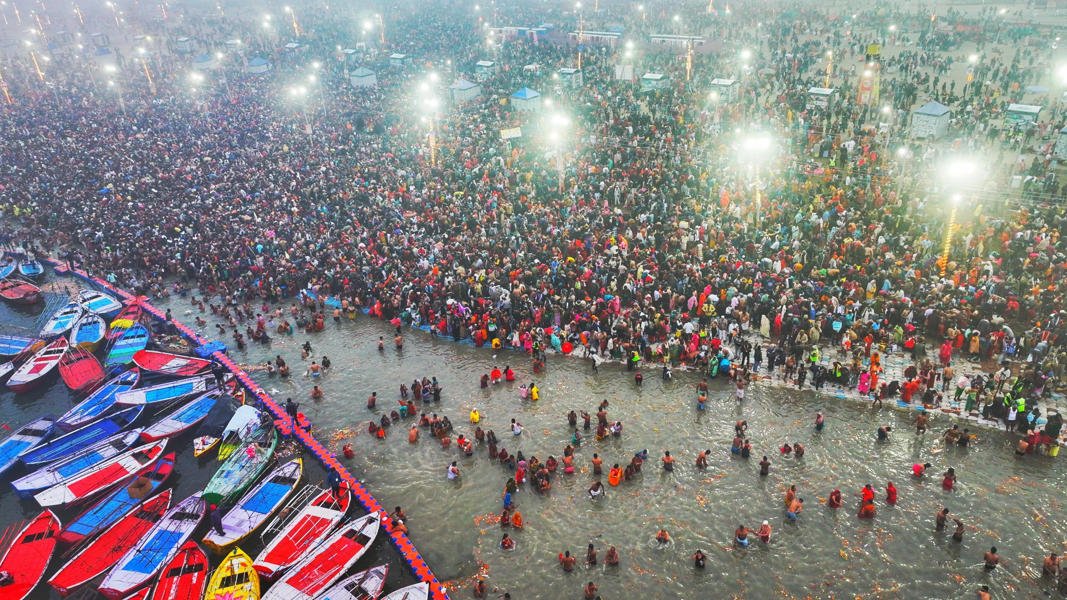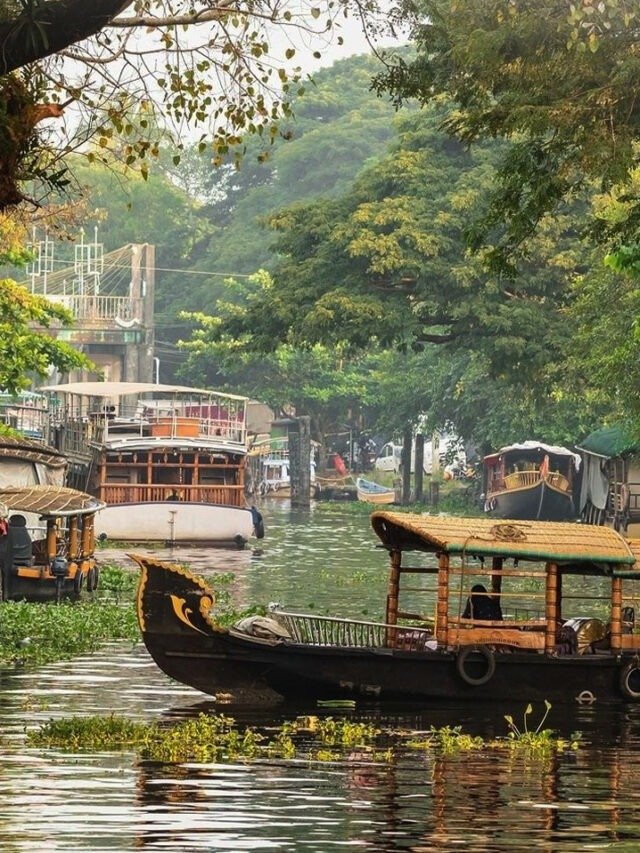Prayagraj/Varanasi/Ayodhya, Feb 10: Undeterred by challenges, lakhs of devotees thronging the Maha Kumbh for a holy dip at the Sangam are now heading towards Kashi and Ayodhya, officials said.
According to government data, an average of 1.44 crore people are taking a holy bath at the Maha Kumbh every day.
Dr Sushma, who arrived in Prayagraj from Ranchi with her son on Monday, told PTI, “After taking a dip in the Sangam and visiting the fair, we will head to Kashi for Lord Shiva’s darshan and later proceed to Ayodhya.”
Similarly, 74-year-old Ketari Devi from Ara, Bihar, said, “We saw on TV and mobile that this Maha Kumbh is happening after 144 years. After taking a holy dip, we will visit Kashi. Despite the huge crowd, we hope that we will get his darshan.”
Nishant Abhishek, who travelled from Mumbai, added, “We’ve heard that apart from Prayagraj, Kashi and Ayodhya are also witnessing heavy crowds. But this is a rare opportunity to visit all the three places during Maha Kumbh. We will also go to Ayodhya.”
ACP (Traffic) Shailendra Singh said that a significant number of devotees are heading towards Varanasi and Ayodhya after their visit to the Maha Kumbh. ADCP (Traffic) Kuldeep Singh said that compared to the 2019 Kumbh, the crowd this time is much larger even on regular days, leading to frequent traffic congestion.
Due to the heavy rush outside the Prayagraj railway station, the Northern Railway’s Lucknow division has temporarily closed it for passenger movement from 1:30 pm on February 9 to midnight on February 14, an official statement said.
However, eight other railway stations in the Maha Kumbh area continue to operate regular and special trains.
As per government figures, over 44 crore devotees have taken a dip at the Triveni Sangam till February 9. On February 10, by 10 am, over 63 lakh devotees had performed the ritual bath.
On key bathing days, the footfall has been record-breaking. On January 13 (Paush Purnima), it was 1.70 crore while on January 14 (Makar Sankranti) it was 3.50 crore, and 7.64 crore (highest so far) took dip in the Sangam on Mauni Amavasya.
With an average of 1.44 crore people taking a dip daily, authorities are managing an unprecedented surge of pilgrims in the holy city.
Over 1.02 crore people have taken holy dip in the Sangam till 4 pm, which included over 10 lakh Kalpwasis and 91.94 lakh pilgrims. The total number of devotees taking dip in the Sangam till date since the start of the Kumbh Mela has crossed 44 crore.
In Varanasi, a large number of devotees returning from the Maha Kumbh are arriving to visit the Kashi Vishwanath temple, leading to massive crowds across the city.
Due to the heavy rush, authorities have imposed restrictions on the movement of four-wheelers in several areas, and vehicles from outside the city are being halted at designated parking zones on the outskirts, officials said.
District and police officials are conducting regular patrols, while CCTV cameras and drones are being used to monitor sensitive and crowded areas, said DCP (Kashi Zone) Gaurav Banswal.
Multiple ‘rain baseras’ (temporary shelters) have been set up across the city for visiting pilgrims, he added.
DCP (Varuna Zone) Chandrakant Meena said that traffic diversions have been implemented at key locations to manage congestion.
External vehicles are being stopped outside the city, with parking facilities arranged on all major routes leading to Varanasi.
The Kashi Vishwanath temple administration has deployed additional staff to manage the surge of devotees.
Special arrangements for healthcare and queue management have been made to ensure a smooth darshan experience, officials said.
According to temple authorities, around four to six lakh devotees are visiting the Kashi Vishwanath temple daily amid the ongoing rush.
In Ayodhya also, the streets leading to the Lord Ram temple and Hanumangarhi are packed. Officials are managing the crowd and restrictions have been imposed on traffic movement in the city.
All the roads leading to the temple town from Lucknow, Sultanpur, Raebareli, Gorakhpur, Ambedkar Nagar and Azamgarh are congested with traffic jams to several kilometers. Ayodhya and its adjoining town Faizabad are packed with crowds.
Officials posted at different barricades on six national highways connecting Ayodhya told PTI that they are restricting the traffic from about 20 kilometres away from the temple town.
V N Arora, a retired principal of Ayodhya’s Saket degree college said, “It took me about eight hours to reach Faizabad from Lucknow. Fortunately, I was aware of village roads that lead to Faizabad, so I took village roads to reach Faizabad from Barabanki.”
“Because of the long queues of devotees on Ram Path, barricades have been placed on the dividers and link roads, blocking the way. Crossing the road is not allowed under any circumstances. As school buses, e-buses, and autos are not operating, students studying in Ayodhya city have been unable to attend schools and colleges for 45 days,” said Jitendra Gupta, a resident of the Raiganj area of Ayodhya.
A nearly two-kilometer-long queue was formed since morning to visit Hanuman Garhi and the Ram Temple on the Ram Path.
The police administration has barricaded the routes leading to the Ram Path through the alleys and along the divider in the middle, halting movement.
Ayodhya Circle Officer Ashutosh Tiwari said this arrangement has been made for the safety of devotees and the local residents.
The system will return to normalcy only when the crowd pressure decreases, he added. (PTI)












